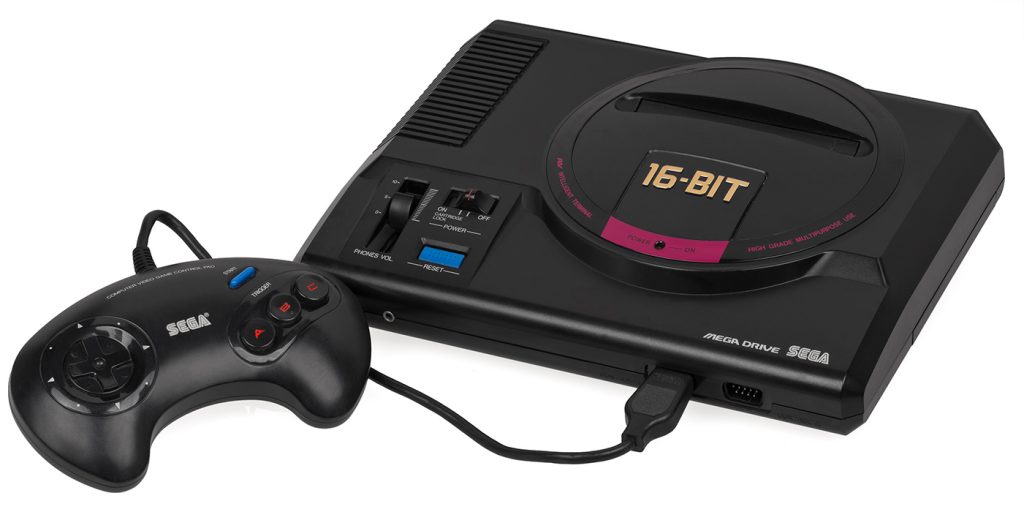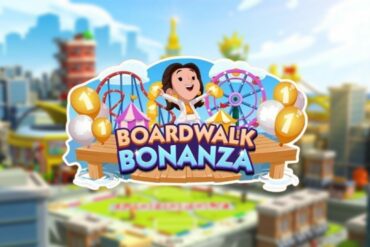While the current major players in the console industry have been consistent for the past several generations, this has not always been the case.
When people talk about the 16-bit era of gaming, the Super Nintendo receives a lot of love and attention. There is nothing inherently wrong with this. History is, after all, written by the victors, and of the console makers in the 16-bit era, Nintendo is the only one left in the console manufacturing business. With retro video game distribution services on apps like the Virtual Console on the 3DS and Wii U, as well as Switch Online, Nintendo makes it relatively easy to access a lot of those games.
Although, it was one of the most successful consoles, in my neck of the woods the SNES was not that big until just before the release of the N64. The 16-bit console of choice among friends and family was the Sega Genesis. This was Sega’s major attempt at stealing Nintendo’s effective monopoly.

My First Experience with a Genesis Console
In 1991, I had just moved to Virginia, living in a rental house, which meant for that relatively brief span of time we not only had cable, we had the Disney Channel. I was watching cartoons, and there was an ad for a console that was not a Nintendo. It was sleek and black. There was something that felt almost forbidden about it, like the proverbial tree in the Garden of Eden. Four-year-old me was just beginning to understand the concept of “cool,” and Sonic the Hedgehog and the Sega Genesis were definitely that.
It would be a little bit longer before I saw one in person, as my family were not ones to pick up home consoles. One of my dad’s coworkers would occasionally watch my siblings and me for my parents. He happened to have a Sega Genesis and would let us play it. The games I remember most vividly of his were Sonic the Hedgehog and Afterburner II, which was a port of an arcade flight simulator, designed by Yu Suzuki. All of these were already more fast-paced than anything I had ever seen on the NES, and there seemed to be more of an edge to them. Nintendo, at that time, was marketing more towards kids. These things (to a little schoolboy) seemed rougher, edgier, cooler.
Games On the Genesis
It was not long before other people I knew started picking up a Sega Genesis as well. The next time I went up to New Jersey to visit family, my cousins had gotten one to replace their aging NES. While the Super NES certainly existed by that point, my cousins were in their teen years and wanted something that appealed a little more to their tastes. As a result of this, I was introduced to things like Streets of Rage, Mortal Kombat, Eternal Champions, as well as a plethora of WWF Wrestling games.

The Streets of Rage series really stood out for me. These games are not only considered some of the finest beat-em-ups ever made but quite possibly the best games on the Genesis. While the Genesis was not known for its sound quality, the soundtracks to these games intertwine well with the fast-paced arcade action the Genesis offered. Even years later, these games are a favorite for my brother and me, and whenever we’re together and have access to them, we will both pick up a controller in order to bust some punks.
While the Genesis had more than its fair share of games that involved kicking seven shades of crap out of people, those were not the only types of games that our cousins shared with us. The Toejam and Earl series is a difficult game to describe. The first one is something like a dungeon crawler or roguelike. But instead of being a DND-style adventurer, you are a pair of aliens from the planet Funkatron, trying to rebuild your spaceship, while avoiding humans.
The second game is a platformer. Humans have managed to get to your home planet and now you must catch them. These games are bizarre, they are offbeat and are filled with an aesthetic that you would only find in the early ’90s. I love them. At that time, Nintendo would not have made anything nearly this bizarre or out there. These genuinely feel like a modern indie game.
The Sega Fever
It would not be long before the Sega fever started to spread. Gaming was not as ubiquitous as it is now by any stretch of the imagination, but it felt like more and more people started buying the Genesis. This was down to Sega’s target market. The Sega commercials went with a totally radical, cool guy vibe to attract the teen market. They also were not afraid to throw shade at Nintendo. For some reason, a Sonic and Knuckles ad sticks out in my memory: a pair of elves pitch this game to Santa. He doesn’t go for it, so they sell it to Sega and become filthy rich.
It was not just the commercials either, even Fox Kids Network was hosting promotional contests for Sega. Basically, all you had to do was send in a postcard and you could potentially win Sega related stuff. Sega felt more present for a good chunk of my early childhood.
What Happened to Sega
One of the big factors of where Sega started to go wrong during the Genesis era was the add-ons. The Sega CD was set to be the new thing that would change the face of video gaming forever. This attachment allowed for bigger and better games with full-motion video, CD-quality music, and voice acting. This, clearly, was going to be the pinnacle of the Genesis gaming capabilities.
Except not terribly long after the Sega CD, ads for another piece of hardware started airing: the 32X. This odd, mushroom-shaped piece of technology was supposed to bring the Genesis into the 32-bit generation. It was cartridge-based, much like the Genesis, but generally improved the graphical capabilities and processing speed of the bases system. My neighbor immediately rushed out to get this thing, but I was confused as he had only just bought the Sega CD. Something about that didn’t add up to me.
And I certainly was not the only one who was confused by this. Neither the Sega CD nor the 32X sold particularly well. People did not want to buy more expensive parts for their Genesis, with the fear Sega might release a completely new piece of hardware. This was also confusing for developers as well. The Sega CD was released with very little warning. Therefore, there were some good games for the machine, but also a lot of just really bad FMV games, or slightly dolled-up ports of regular Genesis games. When the 32X was released, the Sega Saturn was already around the corner and had way more horsepower under the hood. All these random bits of hardware made things confusing for developers and expensive for gamers. Suddenly, the SNES was looking like a much better deal.

The End of the Console Wars
While Sega ended up losing this generation of the console wars, the Genesis shook up the market. Sega changed the way that games were marketed and managed to break Nintendo’s stranglehold on the US Console Scene. Without them, and without the Genesis, the industry would probably look much different today. The Genesis remains a favorite of mine. Genesis, Sega CD, and 32X games make up the biggest chunk of my retro gaming collection.
While only a few of the games have been ported to anything, you can actually still find a good chunk of the first party Genesis games readily available. Likewise, the Genesis Mini is still a thing for those who like microconsoles, as are a variety of Sega Ages ports on the Switch. And dedicated fans are even continuing to make games for this thing. If you want to explore a chunk of the 16-bit era that you may be less experienced with, I can thoroughly recommend investigating the Genesis.






